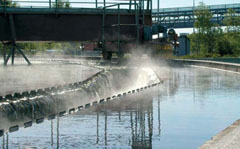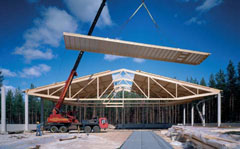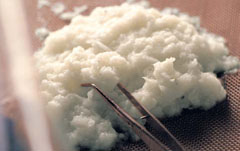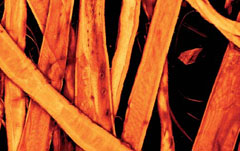| New drying technologies
The traditional kiln drying of solid wood is based on evaporation of water on the wood surfaces through heating. This method requires control of the moisture content of air during the process. Normally, this has been made possible by continuously bringing fresh air into the process. The goal in the new approaches is to develop the drying methods faster, less energy consuming and more controllable in order to gain good drying quality.
In the proposed drying of solid wood, the temperature is raised above 100 °C, while the water in the wood begins to boil and is then evaporated. The moisture content of the surrounding air is held close to 100 % relative humidity. The high relative humidity slows down the drying of wood surfaces whereas the water in the inner parts of wood evaporates fast through the open wood pores. As a result, the moisture gradient inside the solid wood stays more uniform than during the conventional kiln drying. Therefore less cracks, caused by internal drying stresses, should be formed and the quality of wood should remains good in spite of the fast drying. Because no replacement of air is required, the proposed fast drying should save energy.
A totally new drying process for thin veneers will be developed. According to preliminary pilot tests the Condebelt method developed for contact drying of paper seems to be applicable to veneers, too. In the Condebelt method the drying of veneer is accelerated with the temperature difference between the veneer's upper side and underside. A vacuum removes the condensed water from the veneer's underside.
Fire resistant fibreboard Fire resistance is one of the most important issues in wood construction. The knowledge to improve the fire resistance of wood exists at some level. Solid wood can be impregnated with fire-resistant liquids or special fire-resistant boards, such as gypsum board, can be made. However, the use of fire-resistant liquids is restricted by their poor penetration in solid wood and their solubility in water. In addition, the gypsum board cannot be used in load-carrying constructions.
In the new approach wood fibres are treated with a fire resistant liquid and the treated fibres are then used as components of boards or special composite structures. The required fibre treatment technologies are already known, but the manufacturing processes and properties of the boards need to be studied.
. | 





